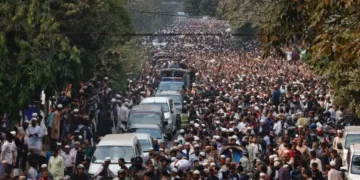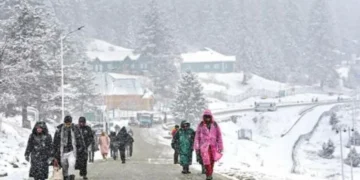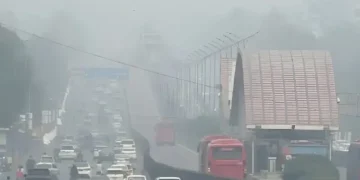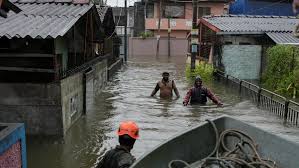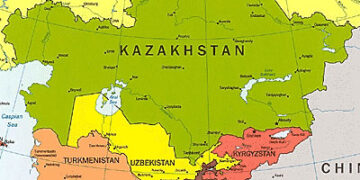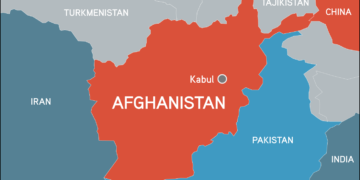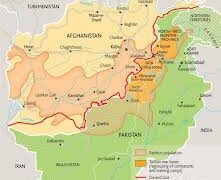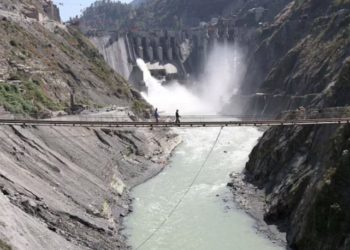MNN (Web Desk); Pakistan is once again in the grip of a relentless monsoon season that has unleashed death and destruction across the country. Heavy rains, cloudbursts, and flash floods have claimed at least 657 lives and left more than 920 people injured since June 26, according to the National Disaster Management Authority (NDMA).
The devastation, fueled by swollen rivers and collapsing homes, has exposed the country’s chronic vulnerability to extreme weather events, which experts link to climate change.
KP Becomes the Epicenter of Tragedy
The northwestern province of Khyber Pakhtunkhwa (KP) has borne the brunt of the disaster. Mountainous districts such as Buner have turned into disaster zones, with Rescue 1122 reporting the recovery of 373 bodies across flood-hit areas.
Most of the victims were from remote villages in Buner, where search and rescue operations remain ongoing despite severe logistical challenges.
Fresh rains on Monday worsened the crisis. In Swabi, a cloudburst triggered flash floods and landslides, killing four members of a family after their house roof collapsed. Deputy Commissioner Swabi Nasrullah Khan confirmed that several homes in Dalori village were washed away by sudden torrents, while landslides damaged roads and cut off access to higher ground.
In Mardan and Nowshera, heavy rainfall flooded streets and homes, while Mingora in Swat district came to a standstill after hours of torrential downpours.
Peshawar, the provincial capital, faced urban flooding of alarming proportions. Overflowing drains turned Saddar Bazaar, University Road, Bara Road, and multiple neighborhoods into rivers. Vehicles were submerged, traffic paralyzed, and water seeped into homes, police stations, and businesses.
In Parachinar, flash floods swelled the Kurram River, damaging embankments and roads, though authorities reported no casualties. Meanwhile, in Buner, volunteers faced the daunting task of reaching cut-off villages where a makeshift bridge risked collapse.
In Nowshera’s Chakki Mamrez, tragedy struck when a husband and wife were killed after their room roof caved in during downpours.
Punjab, Balochistan and AJK Also Affected
Punjab has also been pounded by persistent showers, with Multan, Kabirwala, Jhang, and Khushab recording heavy rainfall. In Chakwal, several areas reported high precipitation, including 67mm at Choa Saidan Shah. Low-lying neighborhoods in Bhakkar and Miani were inundated, leaving residents stranded.
Further south, Quetta and other parts of Balochistan remained cloudy and humid, with the Meteorological Department predicting rains in districts including Zhob, Musakhail, Mastung, Loralai, Kohlu, Kalat, Barkhan, and Sibi. In Azad Jammu and Kashmir, thunderstorms lashed Dhirkot and Poonch division, flooding streets and disrupting electricity supply.
National Response and Relief Efforts
Federal Information Minister Attaullah Tarar described the crisis as a shared national responsibility. Speaking alongside Climate Change Minister Musaddiq Malik and NDMA Chairman Lieutenant General Inam Haider, he said the federal and provincial governments are working in coordination to provide relief.
Tarar revealed that Prime Minister Shehbaz Sharif chaired a high-level meeting to review the situation in KP and Gilgit-Baltistan. “Efforts are being made at the national level to deal with this situation, with NDMA maintaining close contact with provincial governments,” he said.
He added that ministers for water, power, and communications have been instructed to remain present in affected regions to directly oversee restoration work.
The armed forces and multiple relief agencies are actively engaged in search, rescue, and aid distribution across KP, AJK, and GB. Secretary Communications is currently in Gilgit-Baltistan to supervise the restoration of the vital Skardu-Gilgit road, while Kashmir Affairs Minister Amir Muqam is in Buner to monitor relief operations.
Rivers, Dams Under Stress
The Indus River system is under mounting pressure as rains swell its flow. Medium flood levels have been recorded at Kalabagh, Jinnah, Chashma, and Taunsa barrages, where inflows exceed 450,000 cusecs in some locations. Authorities have issued evacuation warnings to residents along vulnerable riverbanks.
Reservoirs are also filling rapidly. Tarbela Dam is now at 97 percent of its storage capacity, while Mangla Dam has reached 71 percent. Officials warn that sustained inflows could trigger further flooding downstream. Meanwhile, minor low floods were reported in tributaries of the Ravi River and hill torrents in Dera Ghazi Khan and Rajanpur.
The Meteorological Department has forecast more heavy rains and thunderstorms until August 19, with three additional wet spells expected before the end of September. Areas most at risk include Charsadda, Nowshera, Mardan, Swabi, and southern KP districts like DI Khan and Tank.
Rising Death Toll and Vulnerability
Of the 657 confirmed fatalities, NDMA data shows that KP alone accounts for 390 deaths, followed by Punjab with 164, Sindh with 28, Balochistan with 20, Gilgit-Baltistan with 32, Azad Kashmir with 15, and Islamabad with 8.
Among the dead are 171 children and 94 women, highlighting the disproportionate vulnerability of women and children during disasters.
NDMA Chairman Lieutenant General Inam Haider has warned that this year’s monsoon intensity is “50 to 60 percent higher than last year” and that the threat is far from over. He cautioned that more rain spells are expected until early September.
Climate Change at the Core
Experts say the scale of destruction is part of a disturbing trend of increasingly severe monsoon cycles in South Asia. Chief Meteorologist Zaheer Babar explained that intense downpours in the mountains often cause flash floods downstream, catching communities off guard.
He emphasized that while climate change is driving extreme rainfall, human factors such as unregulated housing on riverbanks, narrowed waterways, and garbage dumping exacerbate flooding.
Pakistan remains among the world’s most climate-vulnerable nations. The memory of the 2022 floods—when one-third of the country was submerged and nearly 1,700 lives were lost—still looms large.
This year’s unfolding disaster once again underscores the urgent need for climate resilience, better urban planning, and regional cooperation to confront the growing threat of extreme weather.


























